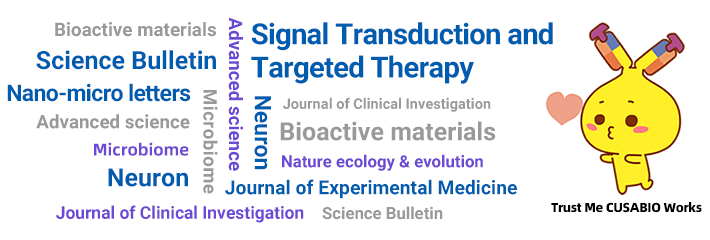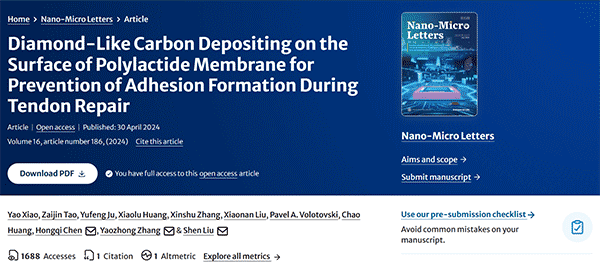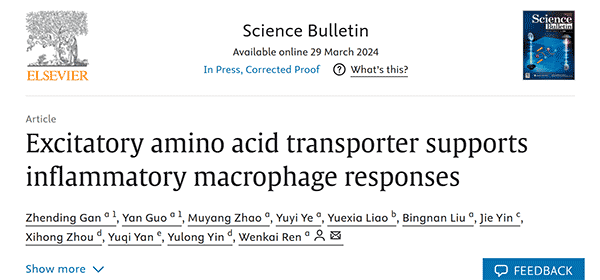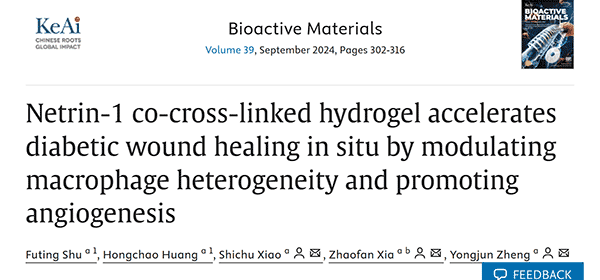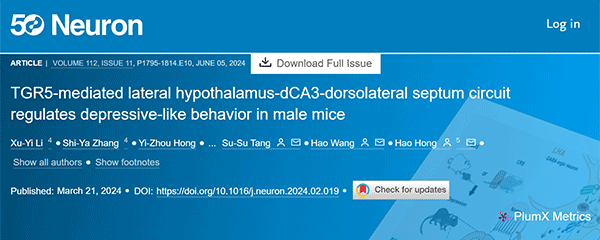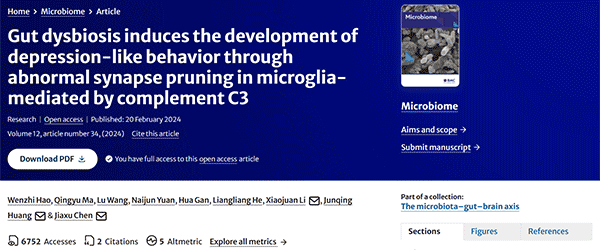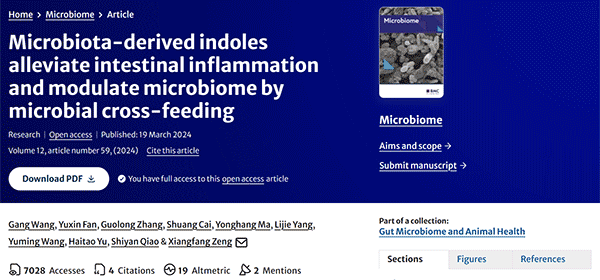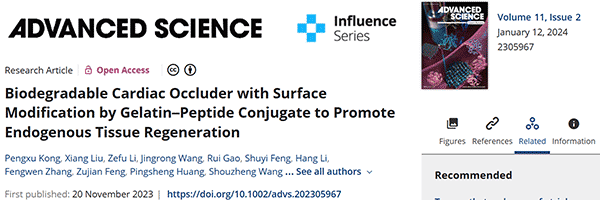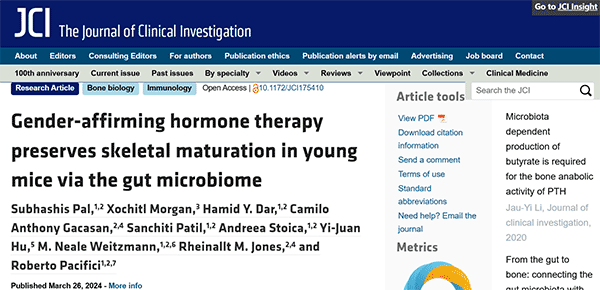Thank you for your continued support of CUSABIO! In July 2024, articles related to CUSABIO products were published in excess of 240, with a cumulative impact factor exceeding 1200. The total number of articles has reached 23,200. Thank you for choosing CUSABIO research products during your scientific research journey. Thank you again for your trust and support. We will continue to work hard to provide you with better products and services. Now let's share our wonderful research results.
CUSABIO Monthly Citations Review
01 Targeted therapy for capillary-venous malformations
Impact Factor: 40.8
Journal Name: Signal Transduction and Targeted Therapy
CUSABIO Citation Product:
CSB-E13584: Mouse D-Dimer,D2D ELISA Kit
Research Highlights:
In this study, a mouse model of PIK3CA-related capillary venous malformations was successfully developed, which accurately mimics the patient phenotype. The malformations were found to be partially driven by the AKT pathway. Alpelisib, a PI3Kα inhibitor, demonstrated significant efficacy in improving capillary venous malformations in both mice and patients. This study supports PI3Kα inhibition as a promising therapeutic strategy for patients with PIK3CA or TEK-related capillary venous malformations. Further clinical studies are necessary to validate and corroborate these findings.
02 Diamond-Like Carbon Depositing on the Surface of Polylactide Membrane for Prevention of Adhesion Formation During Tendon Repair
Impact Factor: 31.6
Journal Name: Nano-micro letters
CUSABIO Citation Product:
CSB-E10526r: Rat 8-Hydroxy-desoxyguanosine,8-OHdG ELISA Kit
Research Highlights:
The study presented in the article explores the use of diamond-like carbon (DLC) deposited on polylactic acid (PLA) membranes as a means to prevent peritendinous adhesion during tendon repair. The research demonstrates that the PLA/DLC composite membrane is more effective in preventing adhesion than the PLA membrane alone. The DLC coating enhances the anti-adhesion effect by 23.11% compared to uncoated PLA. The DLC layer on the PLA membranes is shown to effectively reduce the levels of reactive oxygen species (ROS), leading to a decrease in the expression of pro-inflammatory cytokines within the peritendinous adhesion tissue. Additionally, DLC slows down the biodegradation of PLA and the production of lactic acid, which in turn reduces the number of CD68+CD206+ macrophages within the peritendinous adhesion tissue. The study provides a novel therapeutic approach for preventing peritendinous adhesion and expands the scope of application for carbon-based nanomaterials in osteopathic medicine.
03 Excitatory amino acid transporter supports inflammatory macrophage responses
Impact Factor: 18.8
Journal Name: Science Bulletin
CUSABIO Citation Product:
CSB-E09945h: Human Lipopolysaccharides,LPS ELISA Kit
CSB-E14210h: Human interferon γ(IFN-γ) antibody ELISA kit
CSB-E04633h: Human Interleukin 4,IL-4 ELISA KIT
CSB-E04593h: Human Interleukin 10,IL-10 ELISA KIT
CSB-E13066m: Mouse Lipopolysaccharides(LPS) ELISA Kit
CSB-E04578m: Mouse Interferon γ,IFN-γ ELISA Kit
CSB-E04634m: Mouse Interleukin 4,IL-4 ELISA KIT
CSB-E04594m: Mouse interleukin 10,IL-10 ELISA KIT
Research Highlights:
The article discusses the role of the excitatory amino acid transporter 2 (EAAT2) in inflammatory macrophage polarization. EAAT2, which is responsible for the transportation of excitatory amino acids, is found to be essential for sustaining the activation of mTORC1, a key signaling pathway in macrophage function. The study reveals that lipopolysaccharide (LPS) stimulation increases the expression of EAAT2 via the NF-κB signaling pathway. EAAT2 is predominantly located in the lysosomes of macrophages and plays a critical role in mediating the efflux of glutamate and aspartate from these organelles to maintain the activation of V-ATPase, which in turn supports macropinocytosis and mTORC1 activation. The study also demonstrates that myeloid depletion of Slc1a2, the gene encoding EAAT2, alleviates inflammatory responses in mice models of LPS-induced sepsis and high-fat diet-induced obesity. Additionally, patients with type II diabetes (T2D) are found to have higher levels of lysosomal EAAT2 and activation of mTORC1 in their blood macrophages. The findings suggest that EAAT2 is a potential therapeutic target for the treatment of inflammatory diseases, linking the subcellular distribution of amino acid transporters with the fate decision of immune cells.
04 Netrin-1 co-cross-linked hydrogel accelerates diabetic wound healing in situ by modulating macrophage heterogeneity and promoting angiogenesis
Impact Factor: 18
Journal Name: Bioactive materials
CUSABIO Citation Product:
CSB-EL016127MO: Mouse Netrin-1(NTN1) ELISA kit
Research Highlights:
The study presented in this article investigates the role of Netrin-1 in diabetic wound healing and the development of a Netrin-1 co-crosslinked hydrogel to enhance the healing process. Diabetic wounds are characterized by prolonged inflammation and impaired vascularization, which hinder the normal wound healing process. The research demonstrates that Netrin-1, a protein involved in various biological processes including inflammation and angiogenesis, is highly expressed during the early stages of normal wound healing but is aberrantly low in diabetic wounds. The topical application of Netrin-1 accelerates the healing of diabetic wounds by modulating macrophage heterogeneity, specifically promoting the M2 phenotype, and enhancing angiogenesis. To sustainably deliver Netrin-1 to the wound site, a gelatin methacrylate (GelMA) hydrogel was engineered to encapsulate and release the protein over time. This GelMA-c-NTN1 hydrogel was found to be biocompatible and effective in promoting diabetic wound healing in vivo, providing a novel therapeutic approach for the treatment of diabetic wounds. The study concludes that Netrin-1 is a promising therapeutic target for diabetic wound healing and that the engineered hydrogel can be a valuable tool in achieving sustained and localized delivery of Netrin-1 to enhance the healing process.
05 TGR5-mediated lateral hypothalamus-dCA3-dorsolateral septum circuit regulates depressive-like behavior in male mice
Impact Factor: 16.2
Journal Name: Neuron
CUSABIO Citation Product:
CSB-E07969m: Mouse Corticosterone,CORT ELISA Kit
Research Highlights:
The study explores the role of TGR5 in regulating depressive-like behavior in male mice through its influence on the lateral hypothalamus-dCA3-dorsolateral septum circuit. Key findings include the downregulation of TGR5 in LHA GABAergic neurons under chronic stress and its antidepressant effects via the modulation of the LHA-GABA/dCA3CaMKIIa/DLSGABA circuit. The research suggests TGR5 agonists could be potential therapeutics for depression.
07 Microbiota-derived indoles alleviate intestinal inflammation and modulate microbiome by microbial cross-feeding
Impact Factor: 15.5
Journal Name: Microbiome
CUSABIO Citation Product:
CSB-E04639m: Mouse Interleukin 6,IL-6 ELISA KIT
CSB-E08054m: Mouse Interleukin 1β,IL-1β ELISA Kit
CSB-E04741m: Mouse Tumor necrosis factor α,TNF-α ELISA KIT
CSB-E13066m: Mouse Lipopolysaccharides(LPS) ELISA Kit
Research Highlights:
In this study, we demonstrate that indole-3-lactic acid (ILA), a metabolite produced by Lactobacillus, plays a crucial role in protecting against intestinal inflammation and correcting microbial dysbiosis. ILA enhances the expression of key bacterial enzymes involved in tryptophan metabolism, leading to the synthesis of other indole derivatives such as indole-3-propionic acid (IPA) and indole-3-acetic acid (IAA). These indole derivatives possess the ability to mitigate intestinal inflammation and modulate the gut microbiota in both DSS-induced and IL-10−/− spontaneous colitis models. ILA-mediated microbial cross-feeding is microbiota-dependent and specifically enhances indole derivatives production under conditions of dysbiosis. These findings highlight the mechanisms by which microbiome-host crosstalk cooperatively controls intestinal homeostasis through microbiota-derived indoles mediating inter-microbial communication, which may contribute to the development of microbiota-derived metabolites or targeted “postbiotic” interventions for the treatment or prevention of dysbiosis-driven diseases.
08 Biodegradable Cardiac Occluder with Surface Modification by Gelatin–Peptide Conjugate to Promote Endogenous Tissue Regeneration
Impact Factor: 15.1
Journal Name: Advanced science
CUSABIO Citation Product:
CSB-E04741m: Mouse Tumor necrosis factor α,TNF-α ELISA KIT
CSB-E04756m: Mouse Vascular Endothelial cell Growth Factor,VEGF ELISA KIT
Research Highlights:
This study presents a biodegradable cardiac occluder with surface modification by a gelatin-peptide conjugate to promote endogenous tissue regeneration. The PGAG (polydioxanone/poly(l-lactic acid)–gelatin–A5G81) occluder is designed to enhance endothelial cell adhesion and proliferation, and to modulate immune responses towards an anti-inflammatory state, thereby facilitating tissue regeneration in a porcine atrial septal defect model. The bioactive polymer surface modification, consisting of gelatin covalently bonded with the laminin-derived A5G81 peptide, provides biophysical and biochemical cues that orchestrate biomaterial–host cell interactions, leading to accelerated endothelialization and reduced inflammation and fibrosis. The results highlight the potential of bioactive surface modifications for next-generation biodegradable medical devices that induce endogenous tissue regeneration and improve material–tissue integration.
09 Human neutrophils drive skin autoinflammation by releasing interleukin (IL)-26
Impact Factor: 15.3
Journal Name: Journal of Experimental Medicine
CUSABIO Citation Product:
CSB-E11716h: Human Interleukin 26,IL-26 ELISA Kit
Research Highlights:
The study identifies a critical role for Interleukin-26 (IL-26) in driving and amplifying neutrophil-rich autoinflammation in the skin, specifically in pustular forms of psoriasis. It reveals that IL-26 is constitutively present in neutrophils and is rapidly released from their granules upon activation. Neutrophil-derived IL-26 triggers the expression of autoinflammatory hallmark genes, including IL-1 cytokines and neutrophil-recruiting chemokines, contributing to pustule formation and disease activity in psoriasis. The study describes two mechanisms by which IL-26 drives autoinflammation: direct activation of keratinocytes via the IL-26 receptor, leading to the production of inflammatory mediators, and indirect activation of neutrophils through the formation of complexes with bacterial DNA, which triggers Toll-like receptor 9 (TLR9) activation. These findings suggest that targeting IL-26 or its downstream pathways could be a promising therapeutic strategy for treating pustular psoriasis and potentially other autoinflammatory diseases.
10 Gender affirming hormone therapy preserves skeletal maturation in young mice via the gut microbiome
Impact Factor: 15.9
Journal Name: Journal of Clinical Investigation
CUSABIO Citation Product:
CSB-E13066m: Mouse Lipopolysaccharides(LPS) ELISA Kit
Research Highlights:
The study found that gender-affirming hormone therapy (GAHT) did not hinder skeletal maturation in young mice. In fact, it improved bone structure through increased bone formation in male mice. GAHT altered the gut microbiome composition and gut permeability in both male and female mice, but these changes were only beneficial for bone structure in male mice. The study suggests that GAHT-induced changes in the gut microbiome, particularly an increase in certain Bacteroides species, may promote bone formation by expanding regulatory T cells (Tregs). In contrast, in female mice, GAHT did not lead to improved skeletal maturation, possibly due to the absence of testosterone-induced expansion of Tregs. The findings imply that starting GAHT in transgender adolescents is unlikely to impair skeletal maturation and may even have beneficial effects in male-to-female individuals.
23000+ Published Papers!
CUSABIO team. CUSABIO Monthly Citations Review:240 High-Impact Citations, 23,200 Total Articles!. https://www.cusabio.com/c-21185.html

